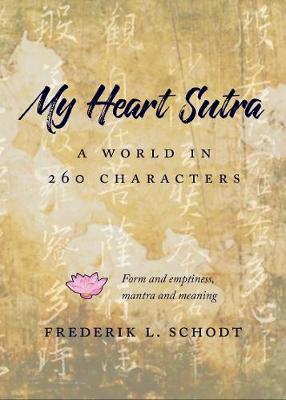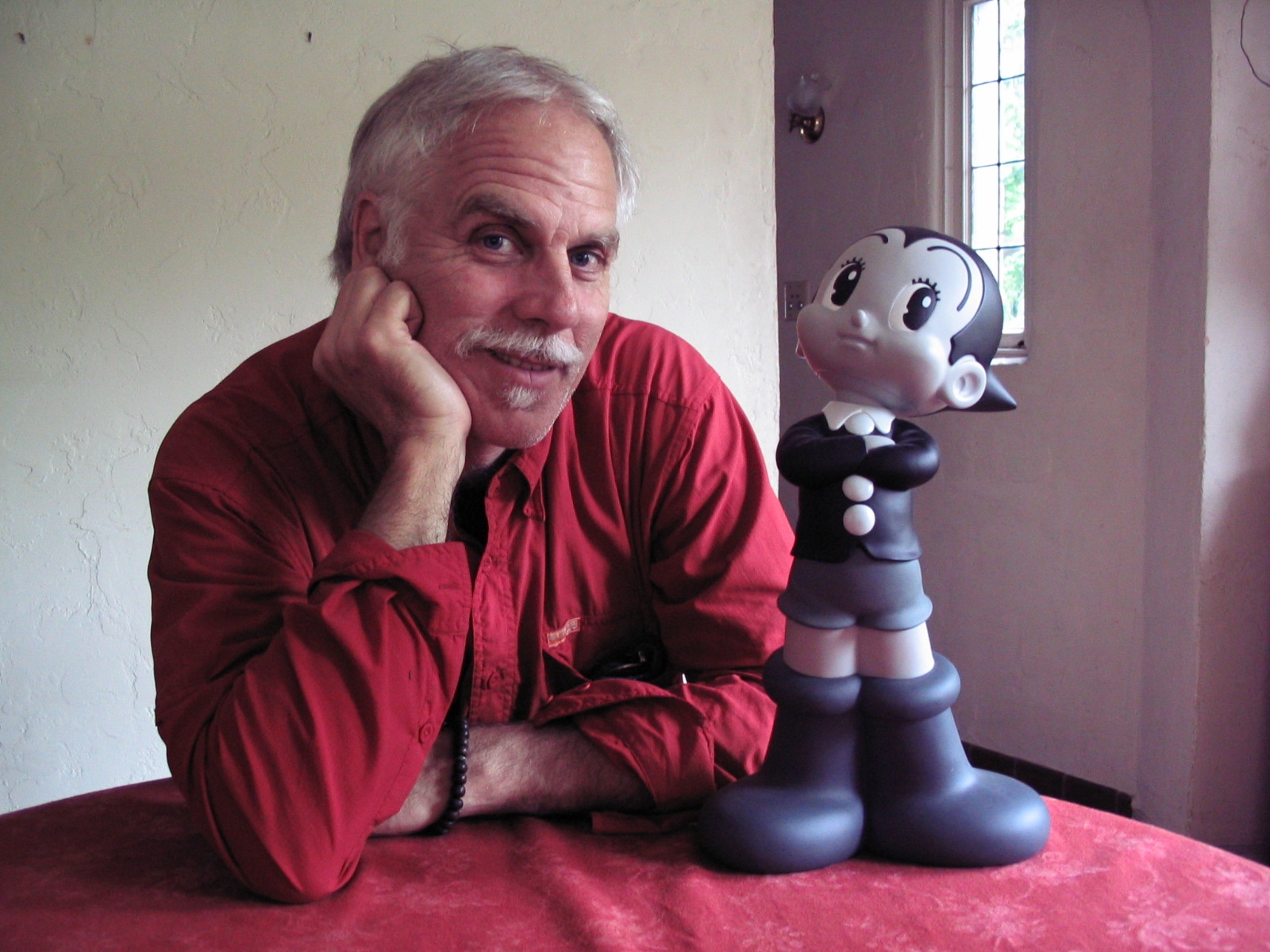The pithy Heart Sutra is celebrated as perhaps the most profound Mahayana Buddhist scripture that remains relatively famous and accessible, frequently appearing not just onstage at pop stars’ concerts in China but also referenced in East Asian films and Japanese manga. For forty years, this Buddhist text has hung on the bedroom wall of Frederik L. Schodt (p. 49), who has been a fixture in the Japanese and American scene cross-cultural dialogue, in particular that of popular culture, manga, and literature. He has been a writer and translator while also serving as a cultural ambassador: he was given the Japan Foundation Award in 2017 in recognition for his efforts to help the West understand better the nuances and complexities of Japanese literature and history. In 2016, as highlighted on Japan Today, he embarked on a translation of Toshio Ban and Tezuka Production’s The Osamu Tezuka Story: A Life in Manga and Anime, the seminal biography of the manga titan. Among his non-fiction historical works are Native American in the Land of the Shogun: Ranald MacDonald and the Opening of Japan (2003) and Professor Risley and the Imperial Japanese Troupe (2012).

This year, Stone Bridge Press has released a new work from Schodt that is unique in his list of publications. The book, as indicated by the title, is not a translation of the Heart Sutra, as one might usually expect. Rather, it is a personal reflection on the Heart Sutra: his own Heart Sutra. This is a refreshing new angle on a universally beloved text. Even though most Mahayana Buddhists know about the text, each of us has a different experience of the text and can explore the meaning that we ourselves find within it: “I began this book with purely personal motives, not even sure it would yield anything worth publishing, for to me it was a challenge—a way to sort my own thoughts and experiences and satisfy my own curiosity. I have had an abiding obsession with the sutra and wanted to learn why, so at times it is also an archaeology of my own memory. And I wanted to look at the Heart Sutra as an unusual social and religious phenomenon.” (p. 10)
He notes at a later point:
“As I have learned, the Heart Sutra can be a string of thoughts, a rhythmical chant, a song, and, when rendered in text, even assume a physical form such as a scroll or countless other symbolic and decorative items. It can be examined with different degrees of semantic magnification, from the macro to the micro, and viewed from doctrinal, faith-based, academic, and personal perspectives. My goal has always been personal, not didactic, to understand the sutra better, to start by grasping its most basic structure and context.” (p. 53)
The book is structured straightforwardly in nine chapters, thematically assorted but with their common thread being the Heart Sutra. Schodt’s reflections are both relatable while also informative and insightful. For example, early in the book Schodt spends several pages (pp. 41-48) discussing the significance of the mantra that the Heart Sutra exhorts readers to chant and disseminate (Gate gate paragate parasamgate bodhi svaha). The chapters “Seeking Context” and “Xuanzang” further ground Schodt’s exploration of the scripture, with Xuanzang’s chapter particularly illuminating in explaining how the Heart Sutra was treated in different cultural ecosystems, spatially and temporally.
There is also something here for Buddhist Studies scholars. The chapter titled “An American Thesis” highlights how a renewed curiosity and scrutiny about the Heart Sutra’s primeval origins could be traced back to American scholar Jan Nattier’s 1992 thesis on that the Sanskrit version of the Heart Sutra used by Xuanzang was itself a back-translation from an earlier Chinese version, not an earlier text that he’d managed to bring back from India. In other words, the earliest complete Heart Sutra was compiled in China from Indian Sanskrit fragments, earning a status that could be read disparagingly by English readers as, “apocryphal.”
The search for an Ur-Heart Sutra, as well as the provenance of the text for spiritual adherents, suddenly became more complicated. Schodt charts the Western, Chinese, and Japanese responses to Nattier’s thesis, highlighting in particular the drama of acclaimed Japanese Buddhologists grappling with Nattier’s thesis (Schodt also mentions a 2019 development in the debate in Hong Kong, where on 22 July Prof. Henry Shiu explored how the sutra might have been compiled, while noting Nattier’s ideas were well-argued). The next two chapters are fully focused on the sutra’s life in Japan, one highlighting how the scripture is used in society, and the other looking at the various modalities (futurist, technological, and artistic) that the Heart Sutra has been through over many centuries.
Like many of Schodt’s works, the uniqueness of this books lies in its “in-betweenness,” almost as if it is itself a manifestation of dialogue: between the personal and the transcendent, between the ancient message of a profound sutra and one impermanent being’s journey to understand it. He could have published an impersonal translation of the work, but rightly perceived that perhaps a different approach was needed. This approach has succeeded quite convincingly – this book is engaging at an intellectual level but also stresses the personal motivation for writing it. As such, it transcends both reflection and scholarship. The simple fact is that Schodt has found the Heart Sutra to be the most transformative spiritual influence in his life, and this book is his tribute for others to experience the scripture’s magic for themselves:
“I will never become a daily zazen meditator, or even join a religious sect, but I will continue to contemplate the ‘emptiness’ concept in the Heart Sutra and other Buddhist teachings. In a way, I find the Heart Sutra to be the ultimate existential and deconstruction tool, something that helps me step outside of myself and try to see the world as it really is, beyond the normal filters of my inherited physical body and its temporal limitations. If you believe that human arrogance is an issue in life, or if you believe, as I do, that a household pet or a tree outside may be just as smart (in its own way) as a human, or if you believe that suffering is all too common and that compassion can be a solution, then the Heart Sutra may also be useful for you, too.” (pp. 216–17)
Frederik L. Schodt. 2020. My Heart Sutra: A World in 260 Characters. Berkeley, CA: Stone Bridge Press.
See more
Entrevista a Frederik L. Schodt (in Spanish) (MangaLand)
Award-winning manga translator Frederik L Schodt still has pages to turn (Japan Today)


